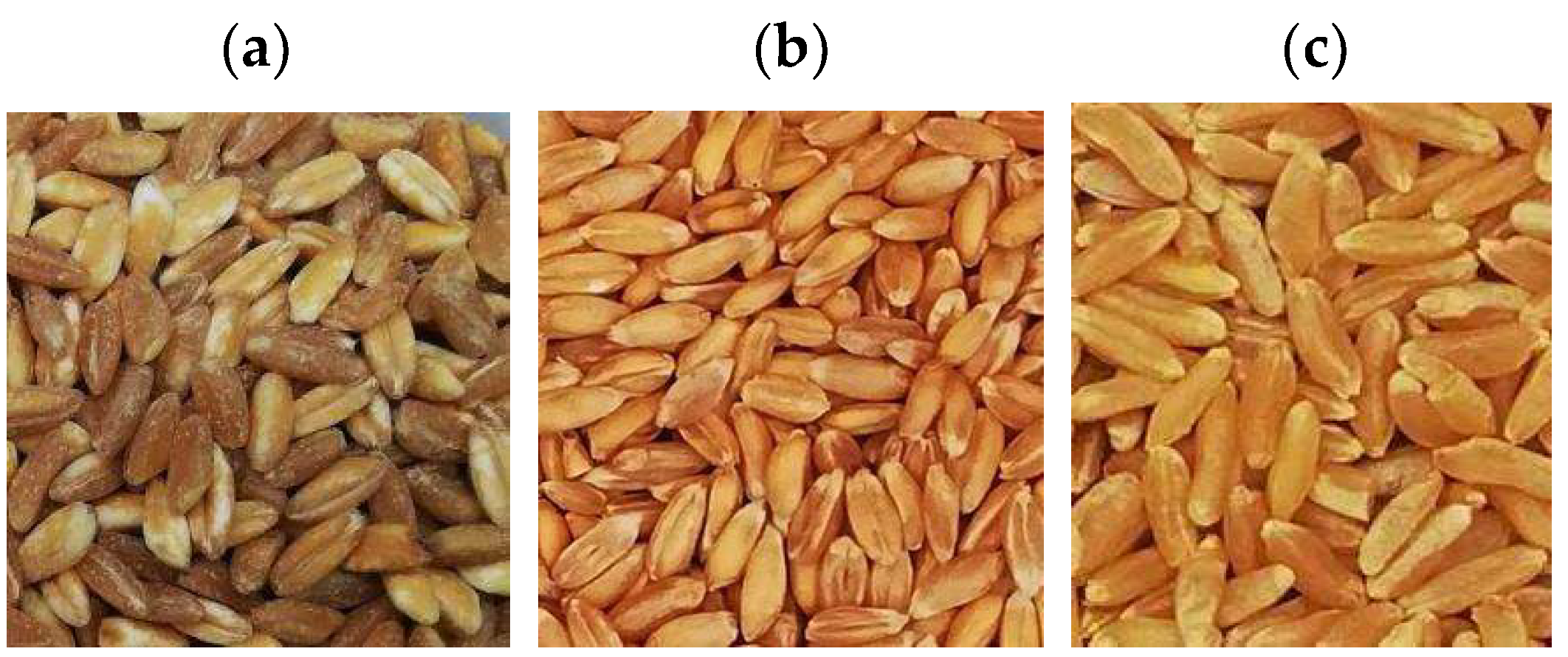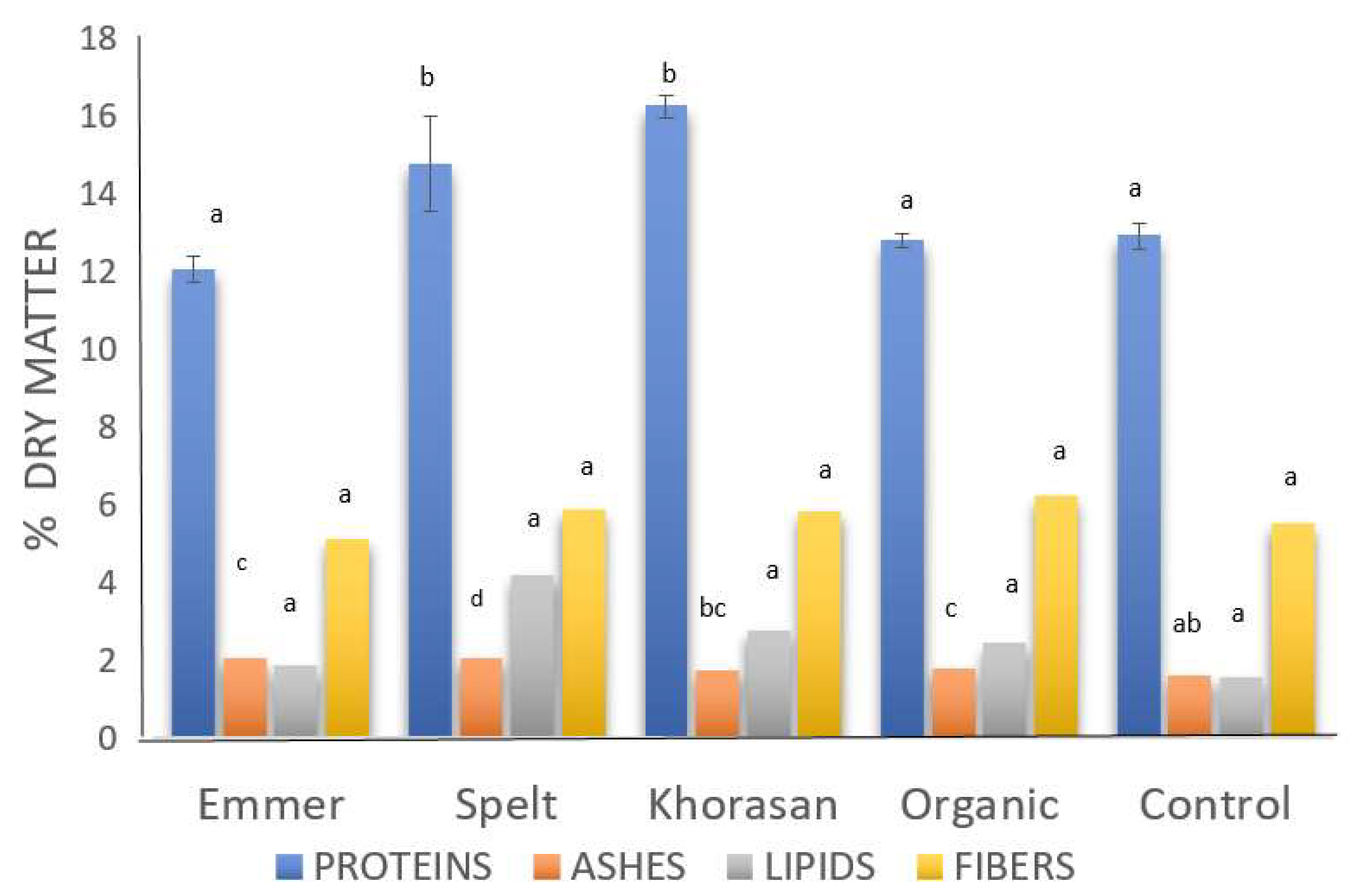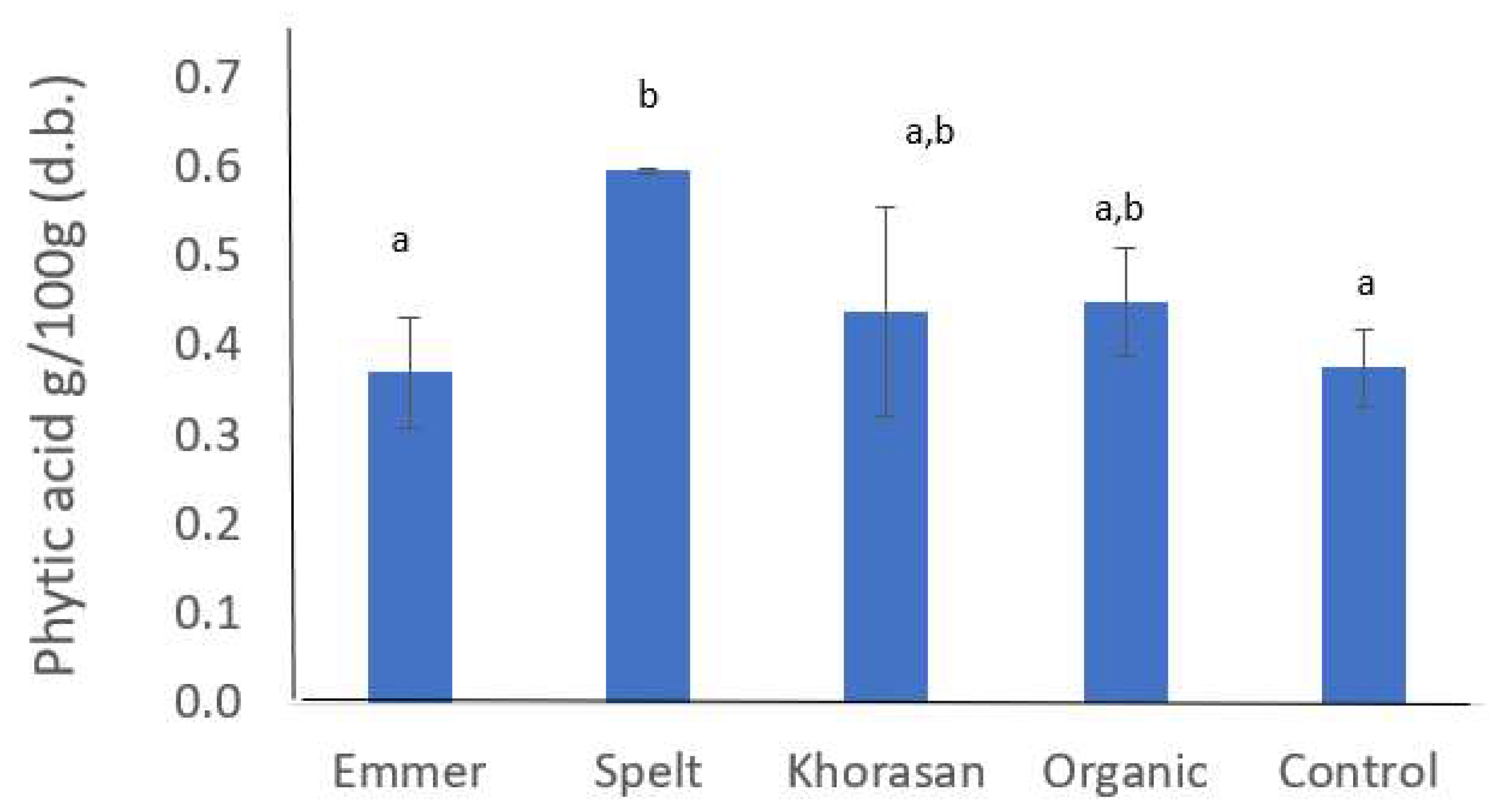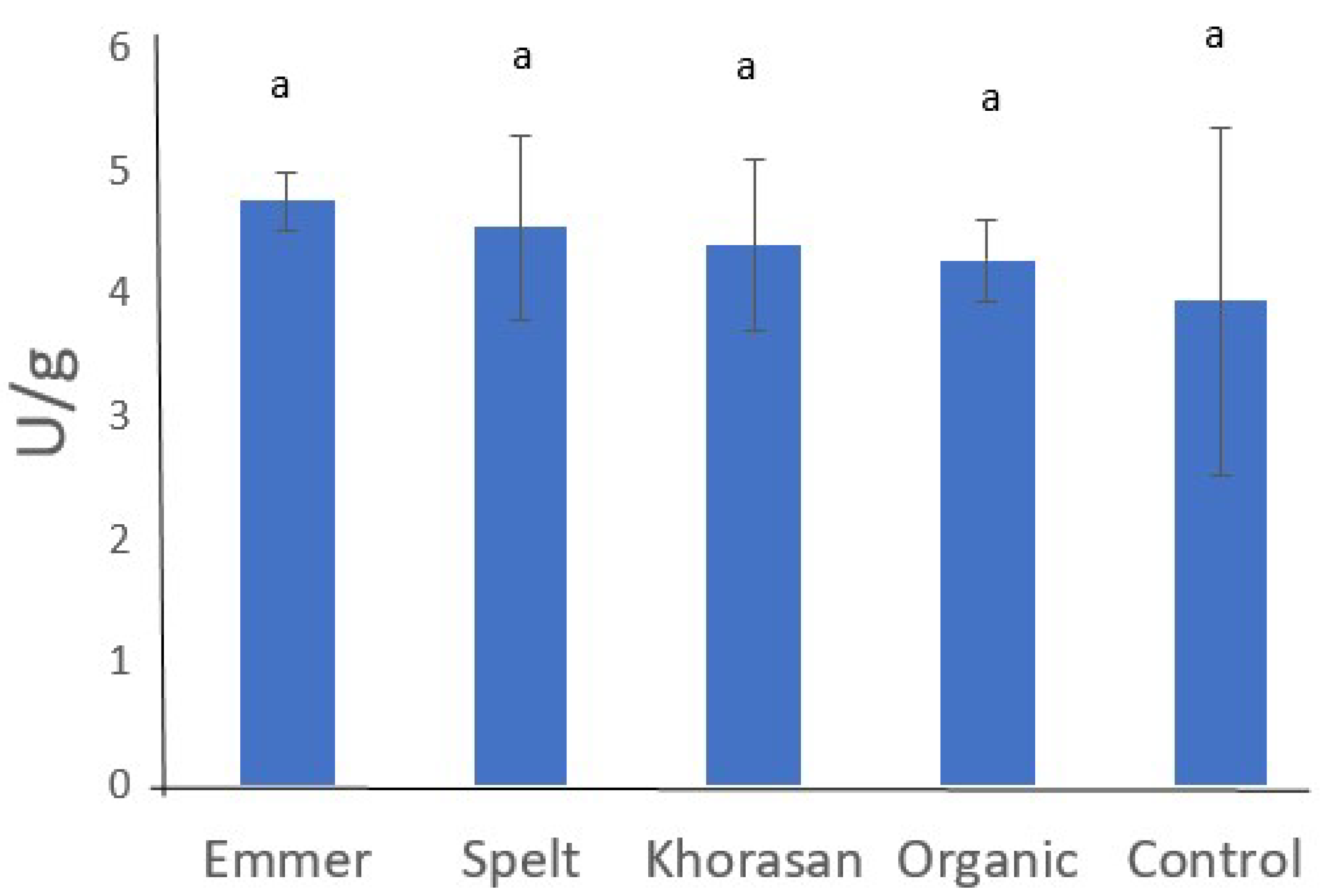Nutritional Characterization of Ancestral Organic Wheats: Emmer, Khorasan and Spelt †
Abstract
1. Introduction
2. Materials and Methods
2.1. Materials
2.2. Composition of the Raw Materials
3. Results
4. Conclusions
Author Contributions
Funding
Institutional Review Board Statement
Informed Consent Statement
Data Availability Statement
Acknowledgments
Conflicts of Interest
References
- Dvorak, J.; Deal, K.R.; Luo, M.-C.; You, F.M.; von Borstel, K.; Dehghani, H. The Origin of Spelt and Free-Threshing Hexaploid Wheat. J. Hered. 2012, 103, 426–441. [Google Scholar] [CrossRef] [PubMed]
- Lacko-Bartošová, M.; Čurná, V. Nutritional characteristics of emmer wheat varieties. J. Microbiol. Biotechnol. Food Sci. 2015, 4, 95–98. [Google Scholar] [CrossRef]
- Mayer, K.F.X. A chromosome-based draft sequence of the hexaploid bread wheat (Triticum aestivum) genome. Science 2014, 345, 286. [Google Scholar]
- Geisslitz, S.; Longin, C.F.H.; Scherf, K.A.; Koehler, P. Comparative Study on Gluten Protein Composition of Ancient (Einkorn, Emmer and Spelt) and Modern Wheat Species (Durum and Common Wheat). Foods 2019, 8, 409. [Google Scholar] [CrossRef] [PubMed]
- Aune, D.; Keum, N.; Giovannucci, E.; Fadnes, L.T.; Boffetta, P.; Greenwood, D.C.; Tonstad, S.; Vatten, L.J.; Riboli, E.; Norat, T. Whole grain consumption and risk of cardiovascular disease, cancer, and all cause and cause specific mortality: Systematic review and dose-response meta-analysis of prospective studies. BMJ 2016, 353, i2716. [Google Scholar] [CrossRef] [PubMed]
- AOAC. Method 925.09, 991.43, 996.11, 986.11. In Official Methods of Analysis, 15th ed.; Association of Official Analytical Chemists: Arlington, VA, USA, 1996. [Google Scholar]
- ISO/TS. Food Products—Determination of the Total Nitrogen Content by Combustion According to the Dumas Principle and Calculation of the Crude Protein Content—Part 1 and 2: Cereals, Pulses and Milled Cereal Products (ISO/TS 16634-1 and ISO/TS 16634-2); International Organization for Standardization (ISO): Geneva, Switzerland, 2016. [Google Scholar]
- AACC. Approved Methods of AACC. Method 08-03, 30-10, 9th ed.; The American Association of Cereal Chemists: St. Paul, MN, USA, 2000. [Google Scholar]
- McKie, V.; McCleary, B.A. Novel and Rapid Colorimetric Method for Measuring Total Phosphorus and Phytic Acid in Foods and Animal Feeds. J. AOAC Int. 2016, 99, 738–743. [Google Scholar] [CrossRef]
- Haros, M.; Rosell, C.M.; Benedito, C. Fungal phytase as a potential breadmaking additive. Eur. Food Res. Technol. 2001, 213, 317–322. [Google Scholar] [CrossRef]




Publisher’s Note: MDPI stays neutral with regard to jurisdictional claims in published maps and institutional affiliations. |
© 2022 by the authors. Licensee MDPI, Basel, Switzerland. This article is an open access article distributed under the terms and conditions of the Creative Commons Attribution (CC BY) license (https://creativecommons.org/licenses/by/4.0/).
Share and Cite
Athinaiou, A.; Aja, S.; Haros, C.M. Nutritional Characterization of Ancestral Organic Wheats: Emmer, Khorasan and Spelt. Biol. Life Sci. Forum 2022, 17, 6. https://doi.org/10.3390/blsf2022017006
Athinaiou A, Aja S, Haros CM. Nutritional Characterization of Ancestral Organic Wheats: Emmer, Khorasan and Spelt. Biology and Life Sciences Forum. 2022; 17(1):6. https://doi.org/10.3390/blsf2022017006
Chicago/Turabian StyleAthinaiou, Aikaterini, Silvia Aja, and Claudia Monika Haros. 2022. "Nutritional Characterization of Ancestral Organic Wheats: Emmer, Khorasan and Spelt" Biology and Life Sciences Forum 17, no. 1: 6. https://doi.org/10.3390/blsf2022017006
APA StyleAthinaiou, A., Aja, S., & Haros, C. M. (2022). Nutritional Characterization of Ancestral Organic Wheats: Emmer, Khorasan and Spelt. Biology and Life Sciences Forum, 17(1), 6. https://doi.org/10.3390/blsf2022017006





